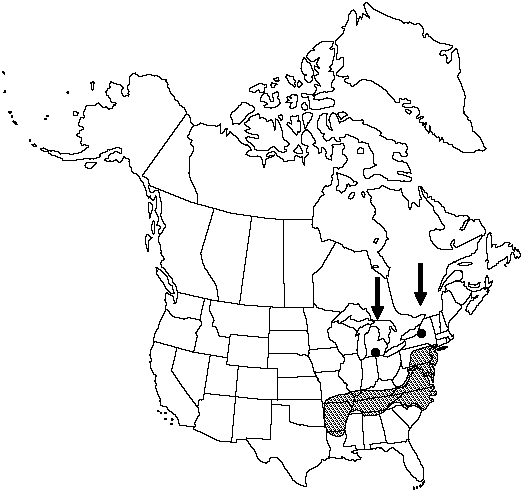Dryopteris celsa
W. Palmer, & Pollard, Proc. Biol. Soc. Wash. 13: 202. 1900.
Leaves monomorphic, dying back in winter, 65–120 × 15–30 cm. Petiole 1/3 length of leaf, scaly at least at base; scales scattered, dark-brown or tan with dark central stripe. Blade green, ovatelanceolate, gradually tapering to tip, pinnate-pinnatifid, herbaceous, not glandular. Pinnae ± in plane of blade, lanceolate-ovate; basal pinnae linear-oblong, much reduced, basal pinnules longer than adjacent pinnules, basal basiscopic pinnule and basal acroscopic pinnule equal; pinnule margins crenately toothed. Sori midway between midvein and margin of segments. Indusia lacking glands. 2n = 164.
Habitat: Seepage slopes, hammocks and logs in swamps, mostly on the Piedmont and Coastal Plain
Elevation: 50–800 m
Distribution

Ala., Ark., Del., Ga., Ill., Ky., La., Md., Mich., Mo., N.J., N.Y., N.C., Pa., S.C., Tenn., Va., W.Va.
Discussion
Dryopteris celsa is a fertile allotetraploid derived from hybridization between D. goldieana and D. ludoviciana. Dryopteris celsa hybridizes with six species; hybrids can usually be identified by the dark-striped scales.
Selected References
None.
Lower Taxa
"not" is not a number. "swollen" is not a number."/3lengthofleaf" is not declared as a valid unit of measurement for this property.